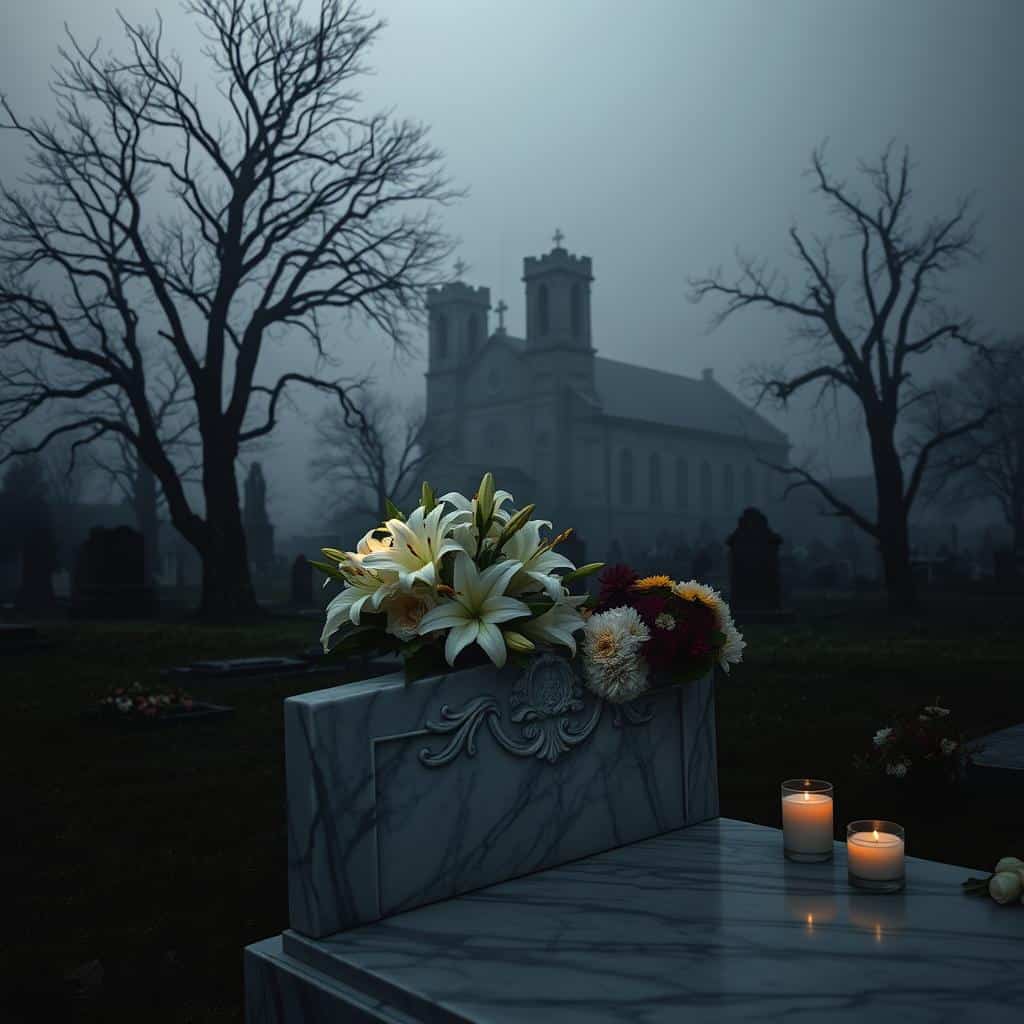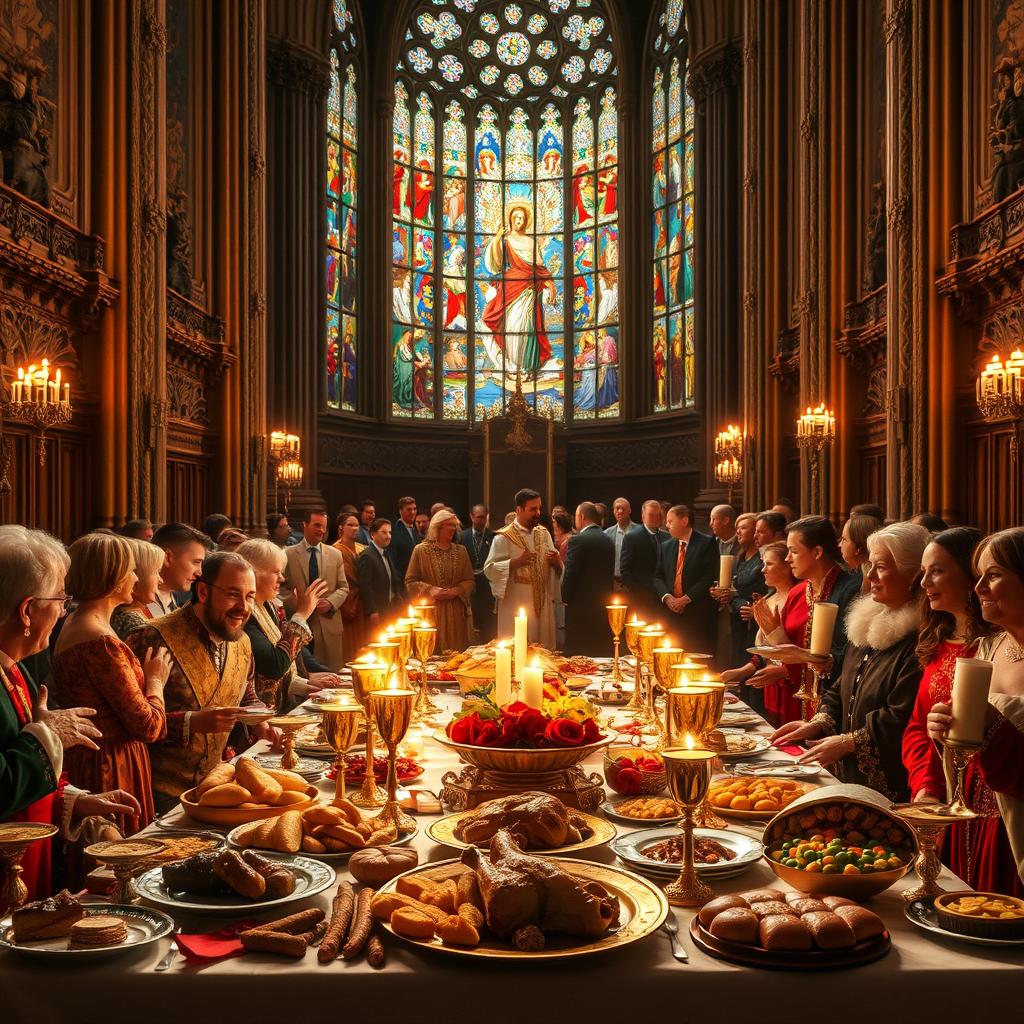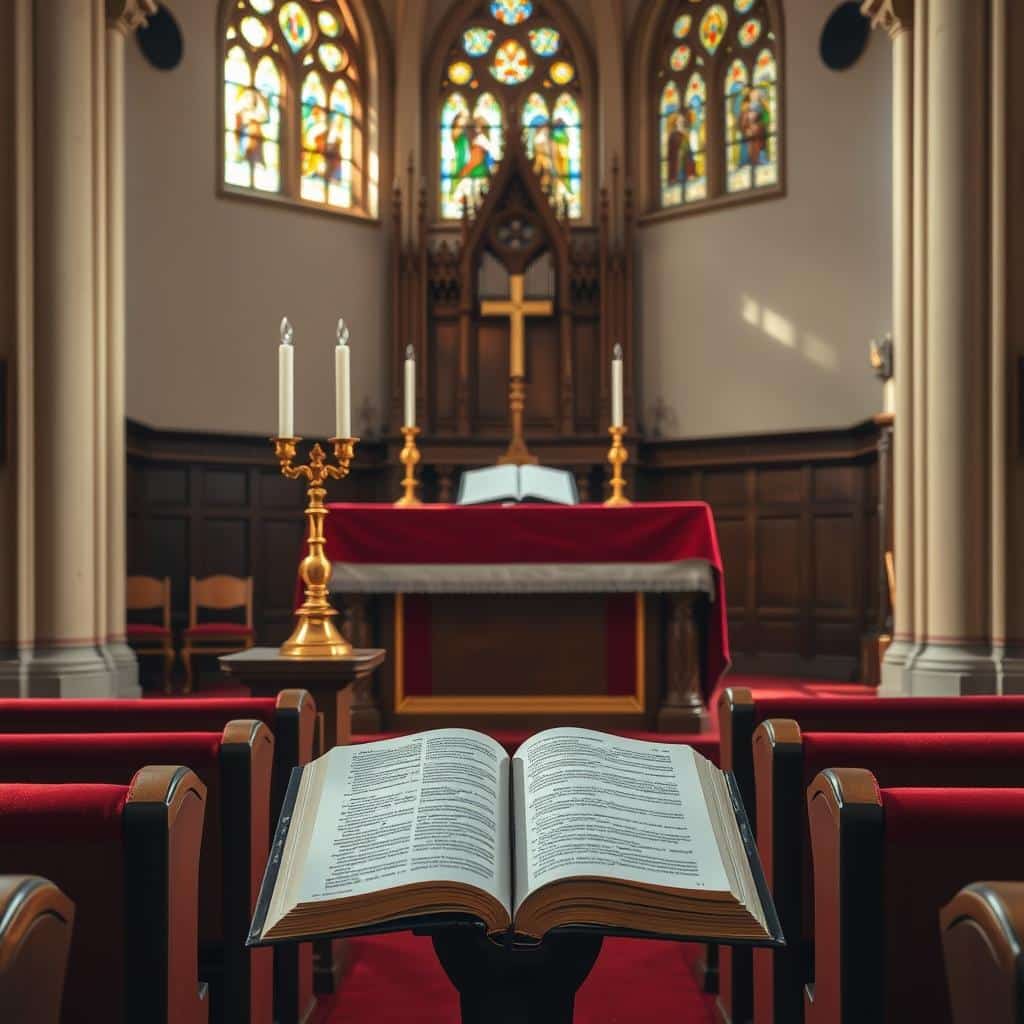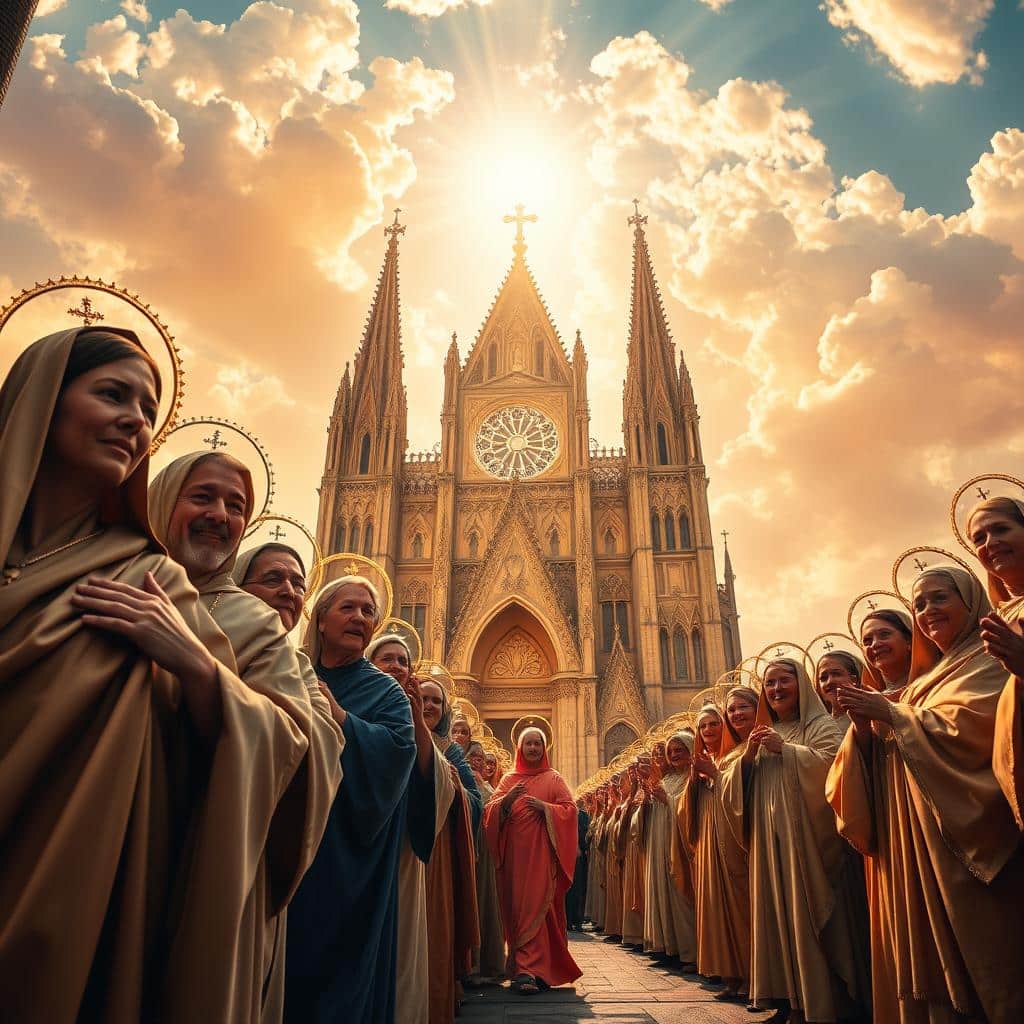The Commemoration of All the Faithful Departed (All Souls)
Every year on November 2, Christians worldwide pause to honor their loved ones who have passed away. This day is known as All Souls’ Day. It is a time for prayer and reflection of All Sou ls’ Day: Honoring the Faithful Departed.
This observance comes right after All Saints’ Day and Halloween. It holds deep meaning in many Christian traditions, including Catholic, Lutheran, and Anglican churches. People come together in a spirit of unity and hope.
The purpose of this guide is to explore the rich history, theology, and customs of this day. Readers will learn about its foundations and how to participate meaningfully. It aims to inspire a deeper connection with this sacred tradition.
Through prayer and acts of remembrance, the living and departed are united. This practice is seen as an act of love and charity. It strengthens bonds within the global community of believers.
Key Takeaways
- All Souls’ Day is observed on November 2 each year.
- It is a Christian day dedicated to prayer for the departed.
- The day is part of the Allhallowtide season.
- Many denominations, including Catholic and Anglican, celebrate it.
- Customs include visiting cemeteries and lighting candles.
- It emphasizes hope and connection within the faith community.
- This guide covers theology, history, and global practices.
Understanding The Commemoration of All the Faithful Departed (All Souls)
This sacred observance centers on a beautiful Christian tradition: remembering those who have passed from this life. It represents a profound spiritual connection between living believers and departed souls.
The Theological Foundation: Purgatory and Prayer
Catholic teaching holds that some souls undergo purification before entering heaven. This process occurs in a state called purgatory. Believers on earth can assist these souls through prayer and good works.
This practice finds roots in ancient scripture. The Book of Maccabees describes prayers offered for the dead. This intercessory prayer remains central to the observance today.
Through these spiritual practices, the living help departed souls reach their eternal reward. It represents an act of love and charity that transcends death itself.
A Day of Ecumenical Christian Remembrance
While practices vary among denominations, the core purpose remains universal. Christians across traditions join in prayerful remembrance on this special day.
Lutherans often view it as an extension of All Saints’ Day. Protestant traditions frequently emphasize resurrection hope and eternal life. Many denominations participate in cemetery visits and joint prayer services.
These shared practices create powerful moments of unity. Christians from different backgrounds come together to honor departed members of their communities. They clean gravesites, light candles, and offer prayers as one faith family.
This ecumenical aspect demonstrates how Christian hope transcends denominational boundaries. It shows how diverse traditions can unite in honoring those who have gone before us in faith.
The Historical Roots of All Souls’ Day
Long before it became an official observance, Christians remembered their departed loved ones. This practice stretches back to the earliest days of the Church. Ancient believers demonstrated deep care for those who had passed from this life.
Early Christian Practices and Prayers for the Dead
Evidence from catacomb inscriptions shows third-century Christians praying for the dead. Early Church fathers like Tertullian and Cyprian wrote about these practices. They believed prayer could assist souls after death.
Liturgical commemorations for the faithful departed were common. These practices formed a beautiful tradition of intercession. They showed love transcending the boundary between life and eternity.
The Decree of St. Odilo of Cluny in 998 AD
In 998 AD, something remarkable happened. St. Odilo of Cluny established November 2 as a special day of remembrance. He dedicated it to prayer for souls in purgatory.
This Benedictine abbot connected the observance with almsgiving for the poor. His decree created a powerful spiritual practice. Monasteries began offering Masses and prayers for the departed.
Development and Spread Throughout the Western Church
The observance quickly spread from Cluniac monasteries. By the eleventh century, the Diocese of Liège adopted the practice. Other regions throughout Europe followed.
In the thirteenth century, Rome and Italy embraced this special day. The Dominican order enriched it by allowing priests to offer three Masses. This tradition deepened the spiritual impact.
During World War I, Pope Benedict XV extended this privilege due to numerous war dead. This showed how the practice adapted to meet the needs of each generation.
Centuries of faithful observance have shaped this day into what it is today. It stands as a testament to hope, charity, and remembrance across the Christian world.
The Message of Hope in the Liturgical Readings
Special scripture passages form the heart of this observance’s worship services. These readings create a powerful narrative of comfort and promise. They guide believers through a journey from grief to hope.
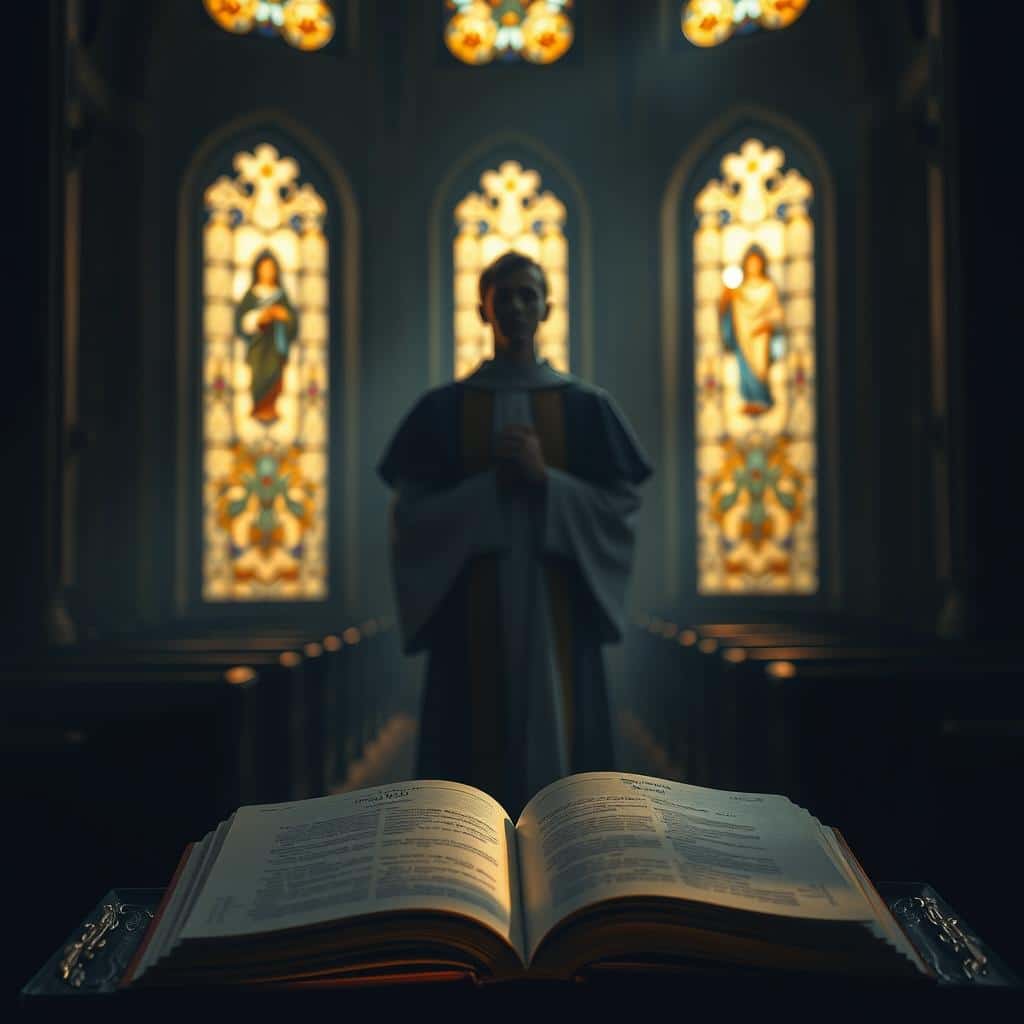
Each text builds upon the last, creating a tapestry of divine assurance. The selections speak directly to those mourning loved ones. They offer profound insights into God’s care for the departed.
Reading I: Wisdom 3:1-9 – The Souls of the Just are in the Hand of God
This passage brings immediate comfort to grieving hearts. It declares that righteous souls rest peacefully in God’s hands. Their departure appears as destruction to the unaware.
In truth, they abide in peace and hope. The text assures they will shine brightly and judge nations. God’s faithful ones remain under His eternal protection.
Responsorial Psalm: Psalm 23 – The Lord is My Shepherd
David’s beloved psalm paints God as a caring shepherd. It acknowledges the valley of the shadow of death. Yet it proclaims fearless confidence in divine guidance.
“Even though I walk through the darkest valley, I fear no evil; for you are with me; your rod and your staff—they comfort me.”
This response between readings reinforces trust in God’s presence. It reminds believers that no journey occurs outside His care.
Reading II: Romans 5:5-11 – Reconciled and Saved by His Blood
Paul’s letter reveals the foundation of Christian hope. God’s love floods believers’ hearts through the Holy Spirit. Christ died for us while we remained sinners.
This sacrifice brings reconciliation and salvation. The passage emphasizes being saved through Christ’s life. It transforms how believers view death and eternity.
Gospel: John 6:37-40 – The Will of the Father for Eternal Life
Jesus speaks directly about God’s plan for humanity. The father desires that none He gives to Christ be lost. All who believe receive eternal life.
Christ promises to raise them up on the last day. This completes the message of resurrection hope. It confirms God’s ultimate victory over death.
Together, these readings form a powerful liturgical journey. They move from God’s protective hand to resurrection promise. This sequence offers genuine comfort to those who mourn.
It affirms that the faithful departed rest in divine care. Their eternal life remains secure through Christ’s sacrifice. This message transforms grief into hopeful anticipation.
Prayers and Devotional Practices for the Holy Souls
Through specific prayers and rituals, believers actively participate in comforting souls awaiting eternal glory. These devotional practices create a beautiful connection between earthly and spiritual realms. They transform grief into acts of loving intercession.
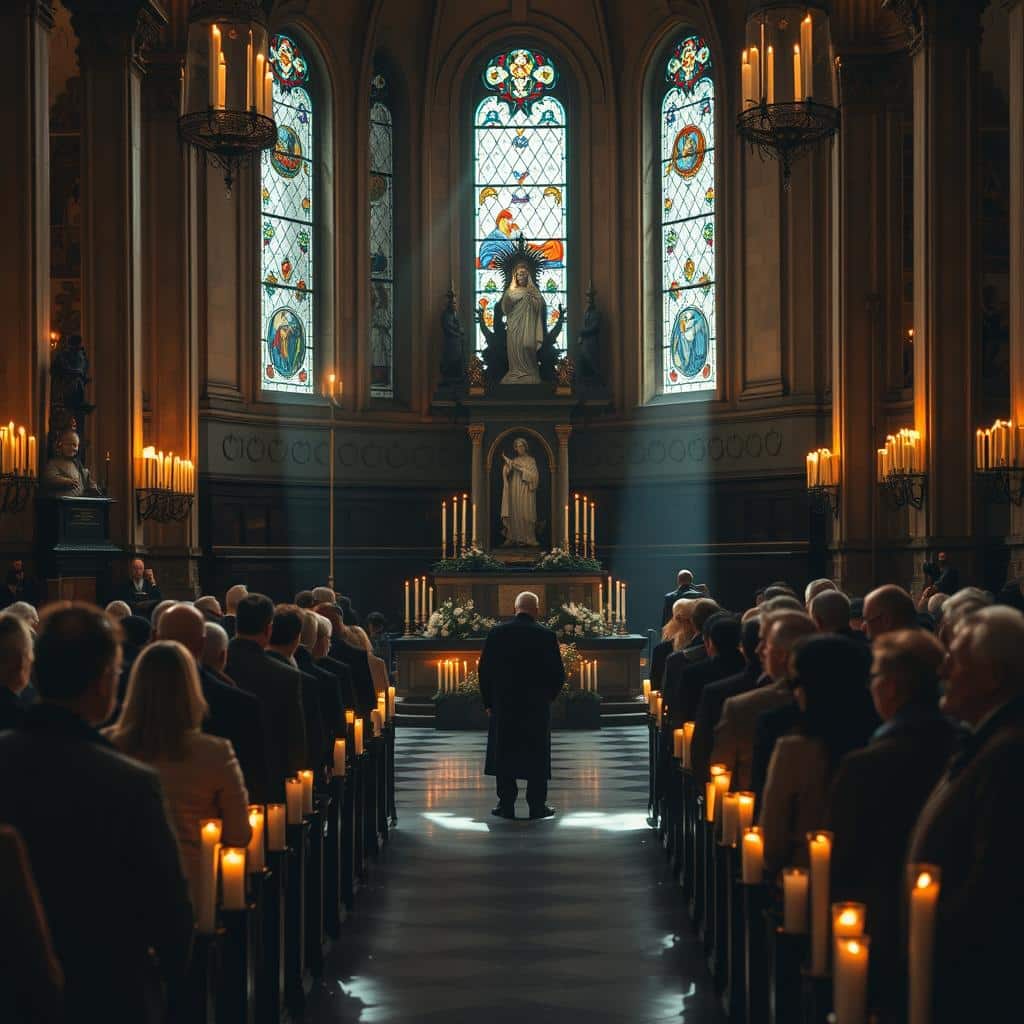
The Prayer for Eternal Rest
Many Catholics recite this powerful prayer for their departed loved ones. Its words bring comfort and hope to those who mourn.
“Eternal rest grant unto them, O Lord, and let perpetual light shine upon them. May they rest in peace. Amen.”
This simple yet profound invocation asks God’s mercy for souls in purgatory. Families often include it in their daily devotions during November.
Gaining Plenary Indulgences from November 1-8
Special opportunities exist during these eight days to help the faithful departed. Catholics can gain plenary indulgences under specific conditions.
Requirements typically include:
- Visiting a cemetery and praying for the departed
- Receiving sacramental confession
- Taking Holy Communion
- Praying for the Pope’s intentions
These acts demonstrate beautiful spiritual charity toward souls needing purification.
Visiting a Cemetery and Praying for the Departed
Grave visits become powerful moments of connection and remembrance. Families bring flowers, light candles, and offer prayers together.
This tangible practice helps children understand the communion of saints. It teaches that love continues beyond physical death.
Many find comfort in cleaning markers and placing fresh arrangements. These actions honor memory while assisting souls’ journey toward eternal life.
Attending Mass and the Three Masses Privilege
The Eucharistic celebration offers the most powerful assistance for holy souls. Priests may celebrate three Masses on this special day.
Pope Benedict XV extended this privilege during World War I. It allows greater spiritual support for numerous departed souls.
Attending Mass demonstrates active participation in the Church’s intercessory work. It unites the living and departed through Christ’s sacrifice.
These practices embody Christian hope and charity. They bring comfort to both the faithful departed and those who mourn them.
Global Traditions and Customs of Observance
Across continents and cultures, this sacred day finds unique expression. Each tradition reflects local heritage while honoring universal Christian values. These practices create beautiful bridges between generations and communities.
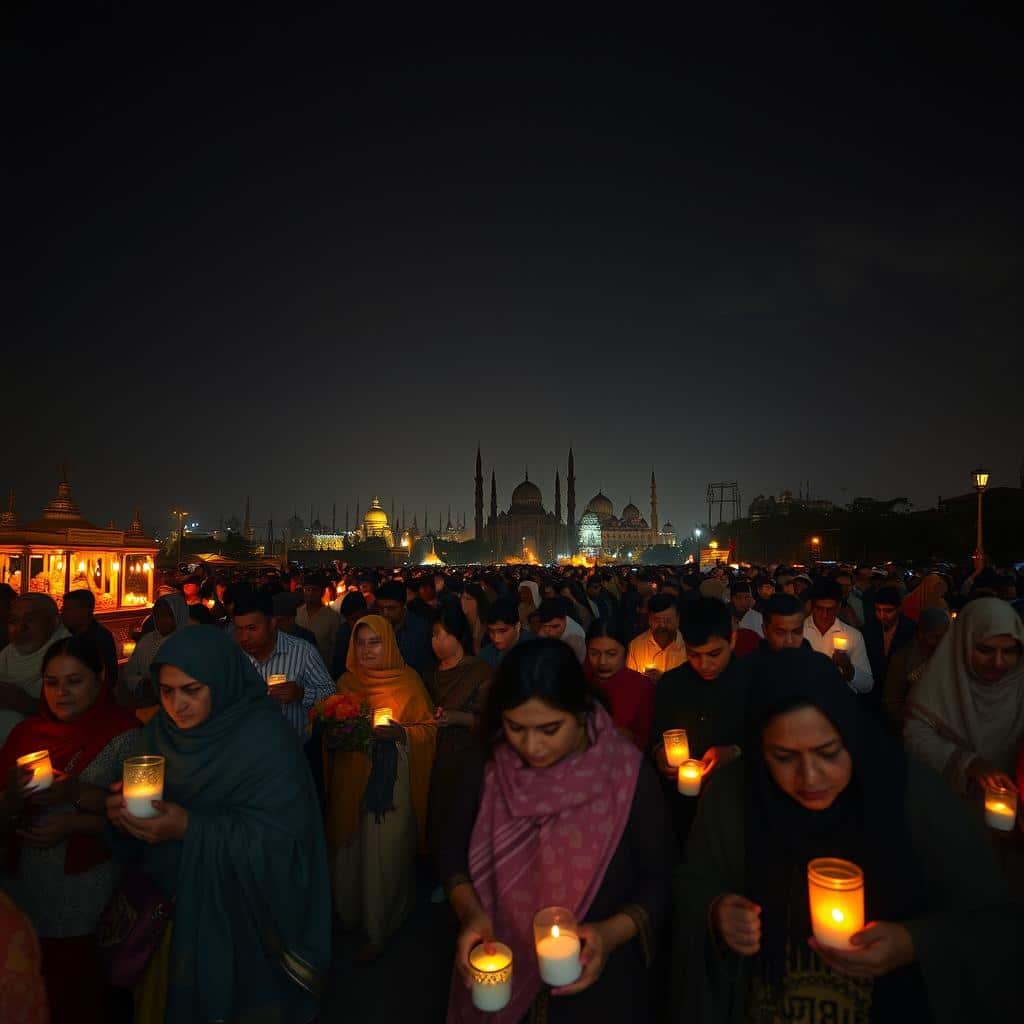
From vibrant Mexican festivals to solemn European ceremonies, customs vary widely. Yet they share a common purpose: honoring those who have passed. This global tapestry of remembrance demonstrates faith’s enduring power.
Dia de los Muertos and Family-Centered Traditions
Mexico’s Dia de los Muertos transforms mourning into celebration. Families build elaborate altars called ofrendas in their homes. These displays feature photos, favorite foods, and marigold flowers.
Gravesites become gathering places where loved ones share stories and meals. Children participate actively, learning about their ancestors through joyful remembrance. This blending of indigenous and Christian traditions creates powerful cultural continuity.
The celebration emphasizes that death does not end relationships. It reaffirms connections between living and departed family members. This approach brings comfort and teaches valuable lessons about life’s cyclical nature.
European Customs: From Soul Cakes to Grave Decorations
England’s historic “souling” tradition involved children visiting homes. They received soul cakes in exchange for prayers for the dead. This practice fostered community care for departed souls.
In Germany and Poland, families decorate graves with candles and wreaths. Cemeteries glow with thousands of lights on this special evening. The visual effect creates a powerful symbol of hope and remembrance.
Many European communities organize cemetery cleaning days before the observance. People of different denominations work together tending gravesites. This ecumenical cooperation demonstrates shared Christian values across traditions.
The Role of Food in Remembrance and Symbolism
Edible offerings play significant roles in global observances. Mexico’s pan de muerto (bread of the dead) symbolizes communion with departed loved ones. Families often shape this sweet bread into bones or skull shapes.
In Italy, families leave meals for departed souls who might visit. This practice reflects belief in ongoing relationships beyond physical death. The shared meal becomes a tangible connection point.
These culinary traditions help children understand abstract concepts about eternity. Through tasting special foods, they participate in honoring ancestors. The practices make remembrance accessible across all ages.
Food becomes more than nourishment—it transforms into love made edible. Each recipe carries memories and stories of those no longer physically present. This creates lasting connections between generations.
All Souls’ Day Within the Context of the Liturgical Year
This special observance finds its perfect place within Christianity’s annual rhythm. It connects believers to deeper spiritual realities through structured worship patterns.
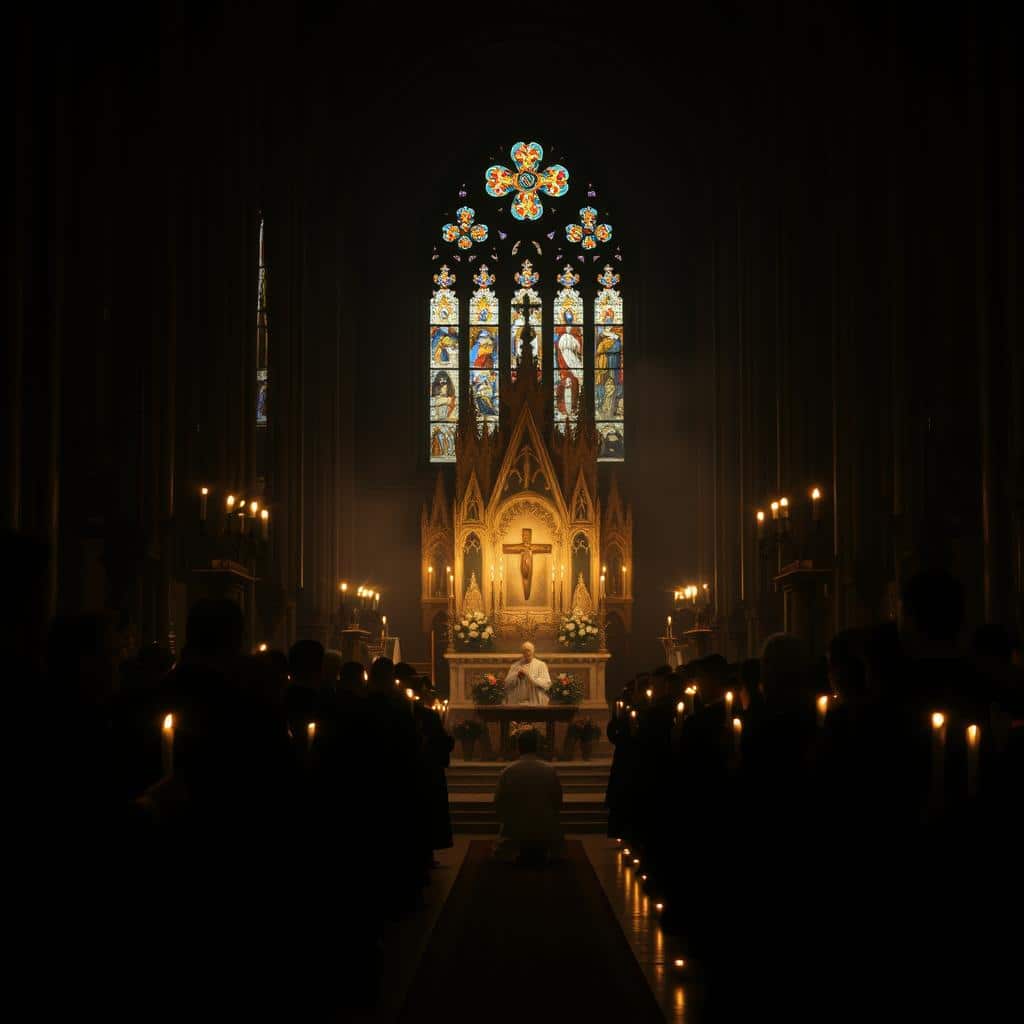
The liturgical year guides Christians through salvation history. Each season focuses on different aspects of faith. November brings particular attention to eternity and remembrance.
The Allhallowtide Triduum: Halloween, All Saints, and All Souls
Three consecutive days form a powerful spiritual journey. Halloween evening begins with acknowledging mortality’s reality. It prepares hearts for what follows.
All Saints’ Day celebrates known and unknown saints in heaven. It inspires believers to strive for holiness. Then comes the focus on souls still undergoing purification.
This triduum covers the full spectrum of Christian hope. It moves from earthly reminders to heavenly celebration. Finally, it embraces prayerful support for those nearing glory.
November: A Month Dedicated to the Holy Souls
The entire month extends this beautiful devotion. Many Catholics maintain special practices throughout November. They offer daily prayers for the faithful departed.
Plenary indulgences remain available for those who visit cemeteries. This encourages ongoing spiritual charity. Families often create home altars with photos and candles.
Throughout this month, priests may celebrate black Mass masses for the dead. Violet vestments sometimes appear during regular services. These visual reminders keep eternity in mind.
This extended observance deepens spiritual engagement. It transforms a single day into a season of remembrance. The practice nourishes hope across generations.
Historical development shows consistent emphasis on this period. Since the eleventh century, the church has encouraged November devotions. This tradition continues strengthening faith communities today.
Embracing this monthly focus enriches personal spirituality. It connects believers to the communion of saints across time. This practice affirms that love transcends death’s boundary.
Through these observances, Christians participate in God’s merciful work. They join a centuries-old tradition of intercessory prayer. This unites the entire church in hopeful expectation.
The Comforting Christian Belief in the Resurrection of the Body
Christian faith offers a beautiful perspective on life’s final journey. It transforms fear into hope through powerful spiritual truths. This view brings comfort to those facing loss or contemplating mortality.
Central to this belief is the conviction that death opens doors to new beginnings. It represents a passage rather than an ending. This understanding shapes how believers approach remembrance and prayer.

Death as a Transition, Not an End
Christian teaching presents physical death as a transformation. The body may cease functioning, but the soul continues its journey. This transition leads toward eternal happiness with God.
Believers find comfort in knowing their departed loved ones enter divine care. They move from earthly limitations to heavenly freedom. This hope sustains many during times of grief.
The promise of bodily resurrection completes this beautiful picture. Faithful souls will receive glorified bodies in God’s perfect timing. This assurance makes earthly farewells temporary separations.
Reconciling with “Sister Death” as Saint Francis Did
Saint Francis of Assisi modeled a remarkable approach to mortality. He called death “Sister Death,” embracing it as life’s natural companion. This perspective fosters spiritual peace and honesty.
Francis understood that avoiding death’s reality creates unnecessary fear. By welcoming it as part of God’s plan, he found liberation. His attitude inspires believers to face mortality with faith.
“Praised be You, my Lord, through our Sister Bodily Death, from whom no living man can escape.”
This reconciliation brings profound serenity. It allows Christians to live fully while anticipating eternity. Such honesty about life’s cycle deepens spiritual maturity.
The Certainty of God’s Promise and Eternal Life
Christ’s resurrection stands as Christianity’s foundational hope. It demonstrates God’s power over death and His faithfulness to promises. This event assures believers of their own future resurrection.
Those who die in faith will be raised to eternal life. This certainty dispels fear and transforms mourning into hopeful anticipation. God’s mercy ensures this glorious outcome for faithful souls.
This promise connects directly with All Souls’ Day observances. Prayers for the departed become acts of hope in resurrection. They reinforce bonds between living and departed community members.
Through these spiritual practices, believers express confidence in God’s plans. They celebrate life everlasting while honoring those who preceded them in faith.
Conclusion
This guide has explored the rich traditions surrounding this special day. It connects theology, history, and global practices into one meaningful observance.
Every year, believers unite in prayer and hope. They honor the faithful departed through Masses, cemetery visits, and personal devotions.
This time of remembrance strengthens community bonds. It offers comfort through the promise of resurrection and eternal life.
Continue this spiritual work beyond November. Light candles, say prayers, or visit resting places monthly.
Embrace this sacred opportunity to connect with loved ones and the wider communion of saints. It brings peace to the living and hope to the departed.
